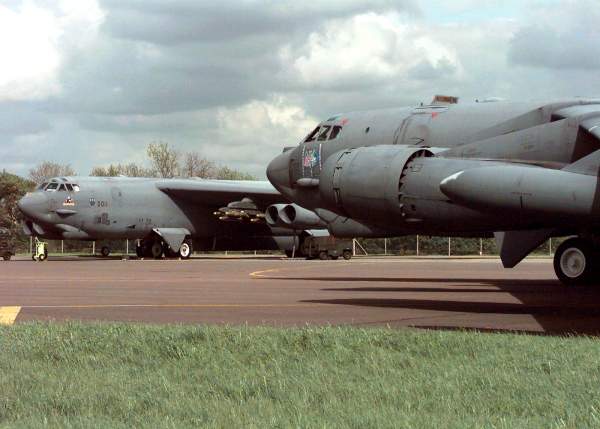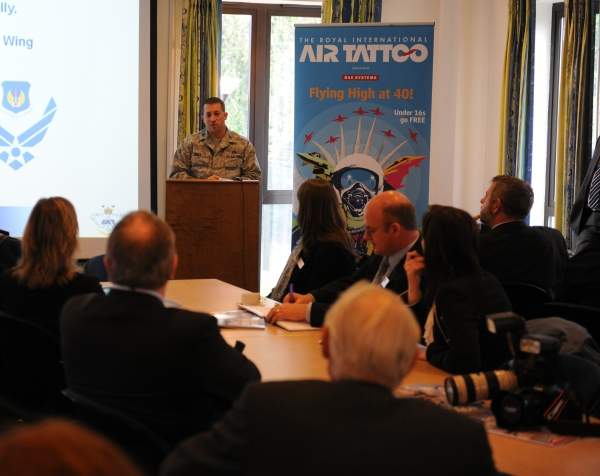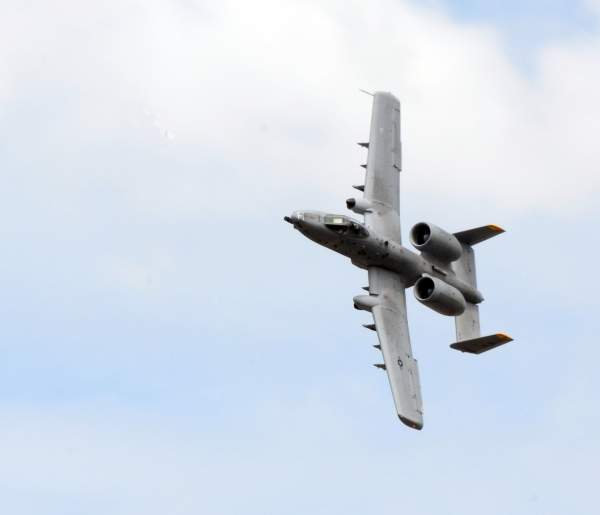Royal Air Force Fairford (IATA code:FDD) is situated one and half miles away from Fairford in Gloucestershire, England. It is owned by the UK Ministry of Defence and operated by the Royal Air Force (RAF) and the United States Air Force (USAF).
Built on a 1,170-acre site, the FDD was identified as the most prominent USAF bomber installation in Europe. It is the only Transoceanic Abort Landing site in the UK for the National Aeronautics Space Agency (Nasa) Space Shuttle emergency landings.
RAF Fairford base history
RAF Fairford was built in 1944 under the designation RAF Stn Fairford. It was constructed to conciliate British and American troop carriers and gliders for deployment in the D-Day invasion of Normandy. The US signed an agreement with the British Government in the early years of cold war to host the USAF Strategic Air Command (SAC) in the UK. The SAC units were deployed at six UK bases including Fairford, Brize Norton, Burtonwood Greenham Common, Mildenhall, Lakenheath and Woodbridge, in 1948.
The FDD was transferred to the USAF in 1950 to carry out strategic bomber missions. It was renamed as United States Air Force in Europe (USAFE) in July 1950. A 10,000ft runway was built at the base in 1953 to execute long range bomber operations.
The base’s control was regained by the UK in June 1964. It was utilised as a British Flight Test Centre for the Concorde aircraft between 1969 and 1978. The USAF deployed the KC-135 Stratotankers in September 1979 and B-52s in April 1980 at the base. The KC-135s were moved from the base in 1990.
RAF Fairford was used during the World War II, the Cold War, the first Gulf War (1991), Operation Allied Force (1999) and the Iraq War (2003).
Design and construction of the Gloucestershire-based complex
A $100m upgrade was undertaken at the RAF Fairford 2000. The upgrades were carried out under the Nato Funded Airfield Construction Project. The runway and fuel systems were renovated and two climate controlled hangars were built for accommodating B-2 Spirit bombers. A maintenance dock was also built.
The renovation work commenced in May 2000 and was completed in May 2002. Construction of the B-2 maintenance hangar was completed in 2008.
Garrison facilities at the strategic air base
The FDD serves as headquarters for the 420th Air Base Group (420 ABG). It is also home to the Royal International Air Tattoo (RIAT), an annual air display conducted in July every year.
The 420 ABG was activated at the base in January 2004. It is a geographically separated unit of the 422nd Air Base Group and directly reports to the 3rd Air Force (3 AF). It provides mission support and executes full flying operations for the USAFE.
The RAF Fairford base has a single runway, 3,046m long. The asphalt-paved runway is the longest runway in the UK.
The base can accommodate Convair B-36 Peacemaker, B-52 Stratofortress, B-47 Stratojet, KC-135 Stratotanker, U-2 Spy plane, B-1B Lancer and B-2 Spirit stealth bomber.
Other facilities at Royal Air Force Fairford
The personnel residing at the base are offered accommodation, temporary lodging, education, medical care, child care and recreation facilities.
The base has a ten million gallon JP-8 hydrant refuelling system, 60 parking spaces for bomber aircraft and highly secured hangar space for three B-2 Spirit. It also renders accommodation for up to 900 additional personnel while executing contingency operations.










